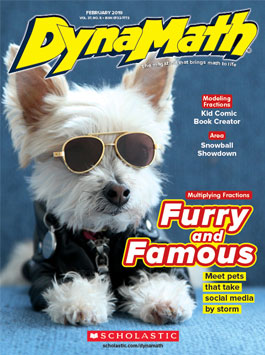Like all fourth-grade teachers, I want my students know their multiplication facts. And while I’ve used minute drills in the past, I’ve found a better way to motivate learning that really works. Plus, it’s a great fluency activity to discuss with parents during conferences.

Multiplication Fluency +
Ice Cream = Motivation
Build a “sweet” understanding of multiplication facts for your students
Incentivize your students to learn their multiplication facts. It’s motivation that really works!
Earning an Ice Cream Sundae With Multiplication
I incentivize students to learn their multiplication facts by earning parts of an ice cream sundae. Initially recommended by a math coach, we start with the bowl (mastery of 2s and 3s) and end with the cherry on top (12s). We start the project early in the fall. As the final reward: Students earn a real ice cream sundae and a keepsake bowl that we incorporate into our holiday party.
Initially, some students were motivated to learn their facts. But others didn’t see their progress, which stifled their desire to persevere. So I improved the activity, making their progress more visual and thus more motivating. I used a large bulletin board outside of my classroom to create a progress "racetrack," inspired by Arcademic's Multiplication Grand Prix.
Racing to Develop Fluency
Not only did the racetrack help motivate the kids, but they also made significant progress in about a month. Some students wanted to be the first to get to the end, and this created friendly competition.
At this time, I announced the ice cream party. Students had to master multiplication up to the 6s to get ice cream. By the time our holiday party rolled around, only about 7 out of 37 students didn’t achieve this level of mastery.
Reinforcing With Cumulative Review
I didn’t want my students to memorize their multiplication facts and then forget them soon after. So we incorporated cumulative review activities for reinforcement.
Each week they had one multiplication sheet for homework, and in class they could use manipulatives, flashcards, songs, and skip counting to master their facts.
In addition, I made minute drill sheets with 24 facts. Half were new, and the other half were review facts from previous minute drills. While this slowed progress for some students, it forced them to KNOW all of their facts.
During free time, recess, or math game time, students could play Arcademics or my favorite childhood computer game, Number Munchers. Students also used iXL.com to practice multiplication.
Above all, I can’t wait to do this activity again next year, adding fraction equivalence drills to the mix!
Do you have fluency ideas? If so, please email them to us.
Check out DynaMath’s fluency activities for grades 3, 4, and 5 here.
Want more elementary math education tips and news? Check out Scholastic's archive.
Victoria J. Payne is a 4th grade math teacher in Texas, with experience teaching grades 3 through 6. She loves math and works to make student learning relevant, engaging, and meaningful.
Recent Posts
-
July 7, 2021
SEL in the Math Classroom: Strategies for Resilience
-
January 30, 2019
Make the Most of DynaMath–With Google Classroom!
-
January 8, 2019
Easy Classroom Updates for 2020
-
December 3, 2019
4 Fun Ways to Use Math Around the Holidays
-
September 10, 2019
Fun Math Icebreaker Activity
Exciting ideas and fun teaching strategies for using DynaMath in 3rd, 4th, and 5th grade math classrooms


